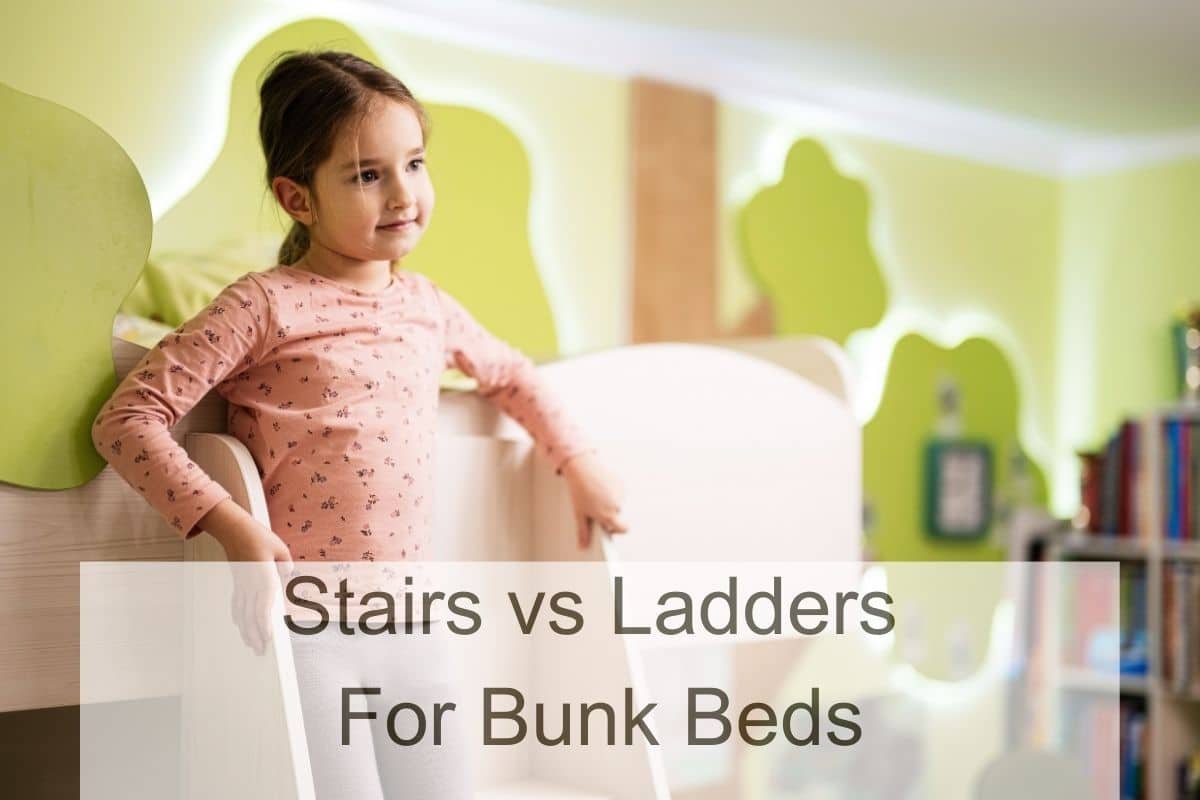Bunk beds are a popular choice for families with multiple children or for those who have limited space. When choosing a bunk bed, one important consideration is whether to choose a ladder or stairs to access the top bunk. As someone who has researched this topic, I have found that there are pros and cons to both options.
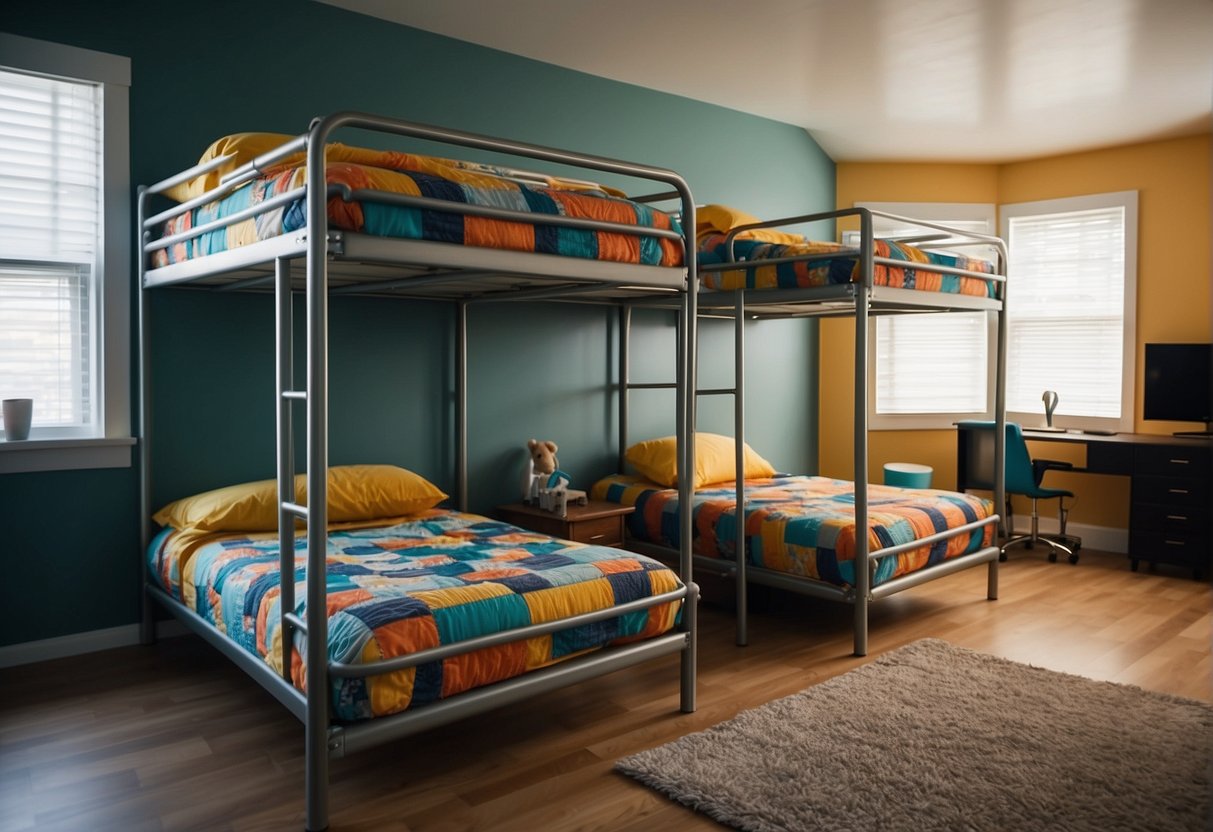
Some people prefer ladders because they take up less space and are generally less expensive than stairs. However, ladders can be difficult to climb, especially for children or those with mobility issues. On the other hand, stairs offer a more comfortable climb and are generally considered safer than ladders. Additionally, stairs often come with built-in storage options, such as drawers or shelves, which can be useful in small bedrooms.
Understanding Bunk Beds
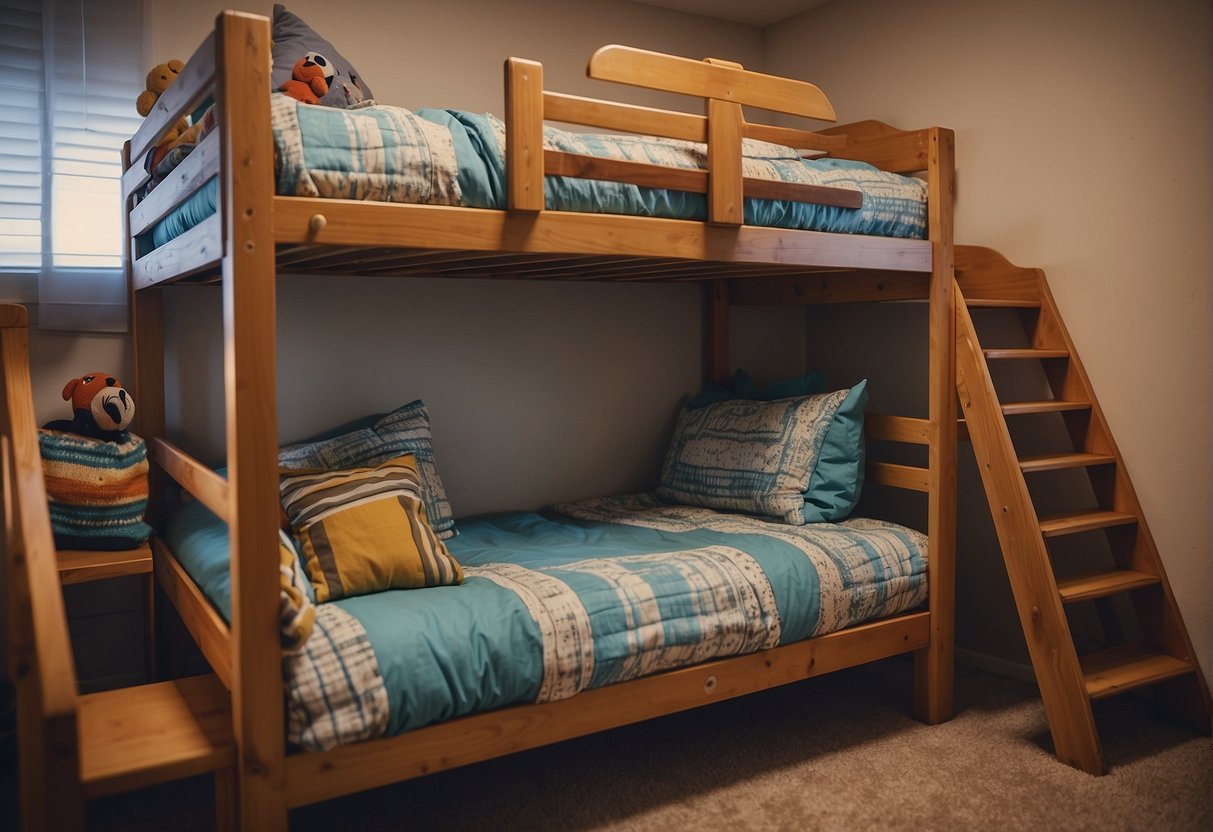
Definition and Purpose
As someone who has owned and used bunk beds for most of my life, I can say that bunk beds are an excellent space-saving solution for bedrooms. Bunk beds are beds that are stacked on top of each other, with the top bed supported by a frame or poles. The primary purpose of bunk beds is to save space, especially in small bedrooms or shared rooms.
Bunk beds are also popular in dormitories, hostels, and summer camps where there is a need to accommodate multiple people in a small space. Bunk beds are also great for children’s bedrooms, as they provide a fun and exciting sleeping experience and can be a great way to encourage siblings to bond.
Types of Bunk Beds
There are several types of bunk beds available on the market, each with its own unique design and features. The most common types of bunk beds include:
- Standard Bunk Beds: These are the most basic type of bunk beds, with a twin bed on top and a twin bed on the bottom.
- Futon Bunk Beds: These bunk beds have a futon on the bottom that can be converted into a bed, making them a great option for a guest room or a child’s bedroom.
- L-Shaped Bunk Beds: These bunk beds have a twin bed on top and a full bed on the bottom, arranged in an L-shape. They are great for maximizing floor space and can be a great option for a shared bedroom.
- Loft Bunk Beds: These bunk beds have a bed on top and an open space underneath that can be used for storage, a desk, or a play area.
When choosing a bunk bed, it’s essential to consider the size of the room, the age and size of the users, and the features that are important to you.
Exploring Ladders
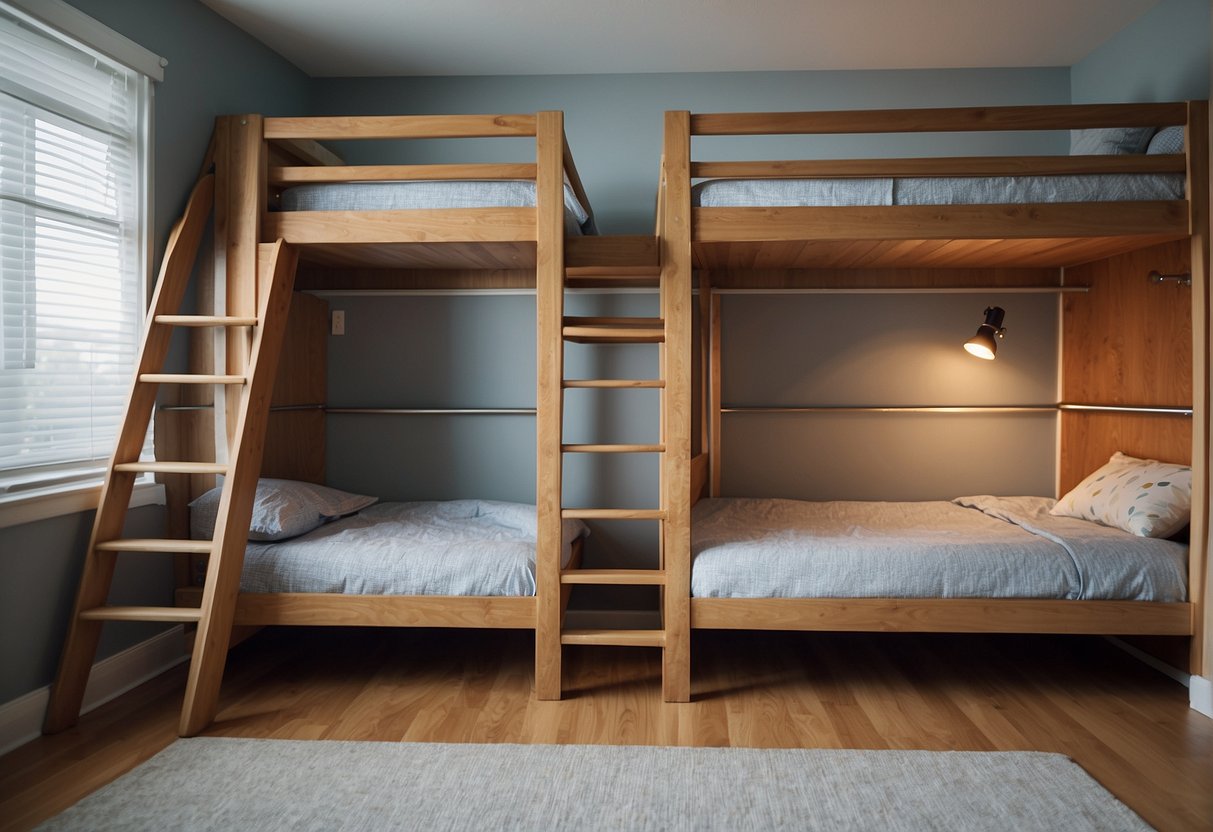
When it comes to bunk beds, ladders are a popular choice for many families. As someone who has slept in a bunk bed with a ladder, I can attest to their convenience and ease of use. Here are some things to consider when exploring ladders for your bunk bed.
Safety Features
One of the main concerns when it comes to ladders is safety. It’s important to choose a ladder that is sturdy and secure, with rungs that are wide enough for feet to rest comfortably. Some ladders also come with additional safety features, such as handrails or non-slip treads. When shopping for a ladder, be sure to look for one that meets safety standards and has positive reviews from other buyers.
Design Variations
Ladders come in a variety of designs, so you can choose one that fits your bunk bed and personal style. Some ladders are built into the bed frame, while others are detachable. Some are straight, while others are angled or curved. You can also choose from different materials, such as wood or metal. Keep in mind that the design of the ladder can affect its ease of use and safety, so choose one that is both functional and aesthetically pleasing.
Space Efficiency
Another advantage of ladders is that they take up less space than stairs. This can be especially important if you have a small room or limited floor space. Ladders can be placed in a variety of positions, such as at the end of the bed or along the side. Some ladders can even be positioned at an angle, which can save even more space.
Investigating Stairs
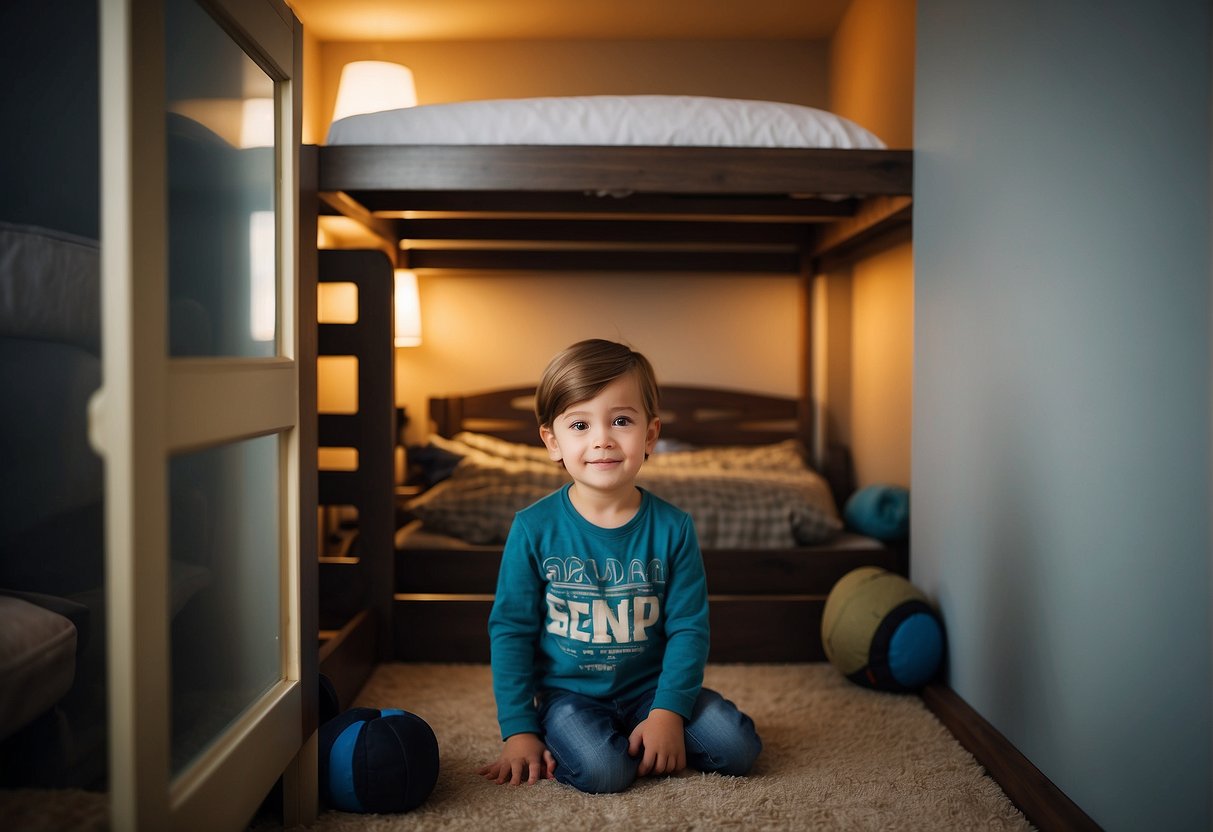
When it comes to bunk beds, stairs offer a number of advantages over ladders. Here are a few things to consider when investigating stairs for your bunk bed:
Ease of Access
One of the biggest advantages of stairs is that they offer a much easier and safer way to access the top bunk. Unlike ladders, which can be steep and difficult to climb, stairs provide a gradual incline that is much easier to navigate, especially for young children or those with mobility concerns. Additionally, stairs often come with secure handrails, providing additional support and security during the climb.
Additional Storage Options
Another advantage of stairs is that they often come with built-in storage options, such as drawers or shelves. This can be a great way to maximize space in a small room, as it eliminates the need for additional furniture such as dressers or bookshelves. Additionally, having storage options built into the stairs can help keep the room more organized, as it provides a designated space for storing clothing, toys, or other items.
Aesthetic Appeal
Finally, stairs can add a stylish touch to your bunk bed, as they come in a variety of styles and finishes to match any decor. Whether you prefer a modern look or something more traditional, there are plenty of options to choose from. Additionally, stairs can be customized to match the size and shape of your bunk bed, providing a seamless and cohesive look.
Comparing Stairs and Ladders
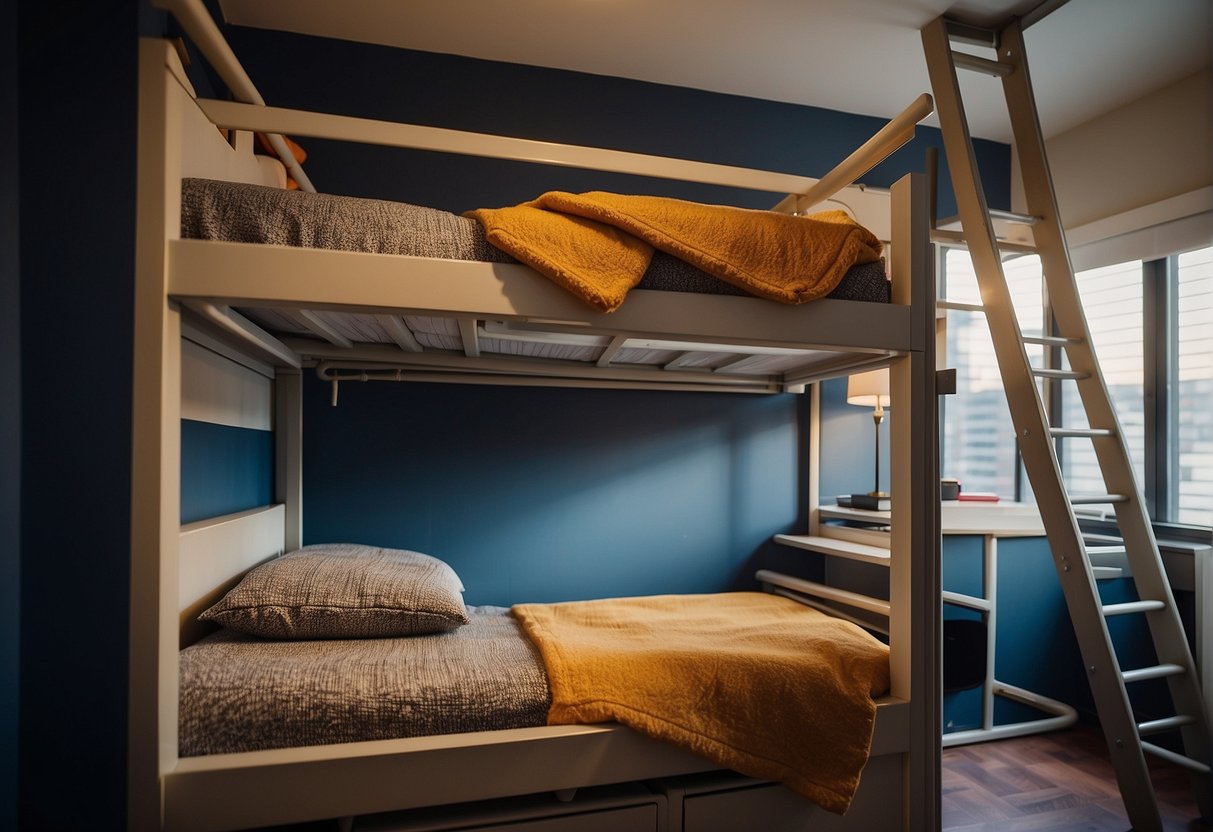
When it comes to bunk beds, choosing between stairs and ladders is a critical decision. Each option has its advantages and disadvantages, and it is essential to consider these factors before making a decision.
Safety Considerations
Safety is a top priority when it comes to bunk beds, and both stairs and ladders have their safety concerns. Ladders may be more hazardous, especially for younger children, as they require climbing up and down. On the other hand, stairs offer a safer option, as they provide a more stable and secure way to access the top bunk. However, it is essential to ensure that the stairs are well-constructed and have proper handrails to prevent falls.
Usability for Different Age Groups
Another factor to consider is the usability of stairs and ladders for different age groups. Ladders may be more suitable for older children and adults who are more agile and can climb up and down easily. However, for younger children, stairs may be a better option, as they are easier to climb and provide a more stable surface to step on.
Installation and Maintenance
When it comes to installation and maintenance, ladders are generally easier to install and require less maintenance than stairs. However, they may need to be checked regularly to ensure that they are secure and stable. On the other hand, stairs may require more installation time and maintenance, but they offer a more permanent solution and may be a better long-term investment.
Space Utilization and Room Layout
When it comes to bunk beds, space utilization and room layout are crucial factors to consider. As someone who has owned both bunk beds with stairs and ladders, I can attest that each has its own benefits and drawbacks.
Bunk beds with stairs are ideal for maximizing floor space. The stairs are built into the bed frame, so they don’t take up any additional floor space. This is especially important if you have a small room or if you want to leave more space for activities. Additionally, stairs can offer additional storage space, such as built-in drawers.
On the other hand, bunk beds with ladders can be a better choice if you have a larger room or if you want a more minimalist look. Ladders take up less space than stairs and can be easily moved around or removed if needed. They also tend to be less expensive than bunk beds with stairs.
Material and Durability Concerns
When it comes to bunk bed safety, material and durability are crucial factors to consider. As a responsible parent, I want to ensure that the bunk bed I choose for my children is sturdy and made of high-quality materials that can withstand the test of time.
Generally, bunk beds made of solid wood or metal are considered the most durable. They can withstand the weight of both children and adults and can last for many years. However, it’s important to note that the quality of the wood or metal used can vary, so it’s essential to choose a reputable brand that uses high-quality materials.
Ladders and stairs also play a role in the durability of bunk beds. Ladders made of metal or solid wood are generally more durable than those made of plastic. Stairs made of solid wood with a sturdy handrail are also more durable than those made of particleboard or MDF.
Cost Analysis
When it comes to bunk beds, cost is always a significant factor to consider. In general, bunk beds with ladders tend to be less expensive than those with stairs. This is because ladders are simpler to manufacture and install, requiring fewer materials and less labor.
However, it’s important to note that there are exceptions to this rule. Some bunk beds with ladders may be more expensive than those with stairs if they feature additional amenities like storage drawers, bookshelves, or built-in desks. Additionally, the quality of the materials used and the overall design of the bunk bed can also impact the price.
Another thing to consider is the long-term cost of ownership. While bunk beds with stairs may be more expensive upfront, they can be a better investment in the long run. This is because stairs are generally safer and more durable than ladders, which can wear down over time and may need to be replaced.
Customization and Flexibility
When it comes to customization and flexibility, bunk beds with stairs have the upper hand. Stairs offer more design options, such as built-in storage drawers or shelves, which can be very useful in a small room. Additionally, stairs can be placed on either side of the bed, depending on the layout of the room.
Ladders, on the other hand, offer less customization options. They are typically fixed in place and cannot be moved or customized once installed. However, some bunk beds with ladders do offer the option to detach the ladder for more flexibility.
Another advantage of stairs is that they can be safer for young children. Stairs provide a more stable and secure way to climb up and down from the top bunk, especially when they come with handrails. This can give parents peace of mind knowing that their child is less likely to fall.
User Reviews and Preferences
When it comes to bunk beds, the choice between stairs and ladders is often a matter of personal preference. Some users prefer the convenience and simplicity of ladders, while others prefer the added safety and stability of stairs.
In my research, I found that many users appreciate the ease of use that ladders provide. Ladders are often simpler to install and take up less space than stairs, making them a great option for smaller rooms. Additionally, ladders can often be moved or repositioned more easily than stairs, allowing for greater flexibility in room design.
On the other hand, many users prefer the added safety and stability of stairs. Stairs offer a more gradual incline than ladders, making them easier and safer to climb, especially for young children or those with mobility concerns. Additionally, many stair designs include handrails, providing additional support and security during the climb.

